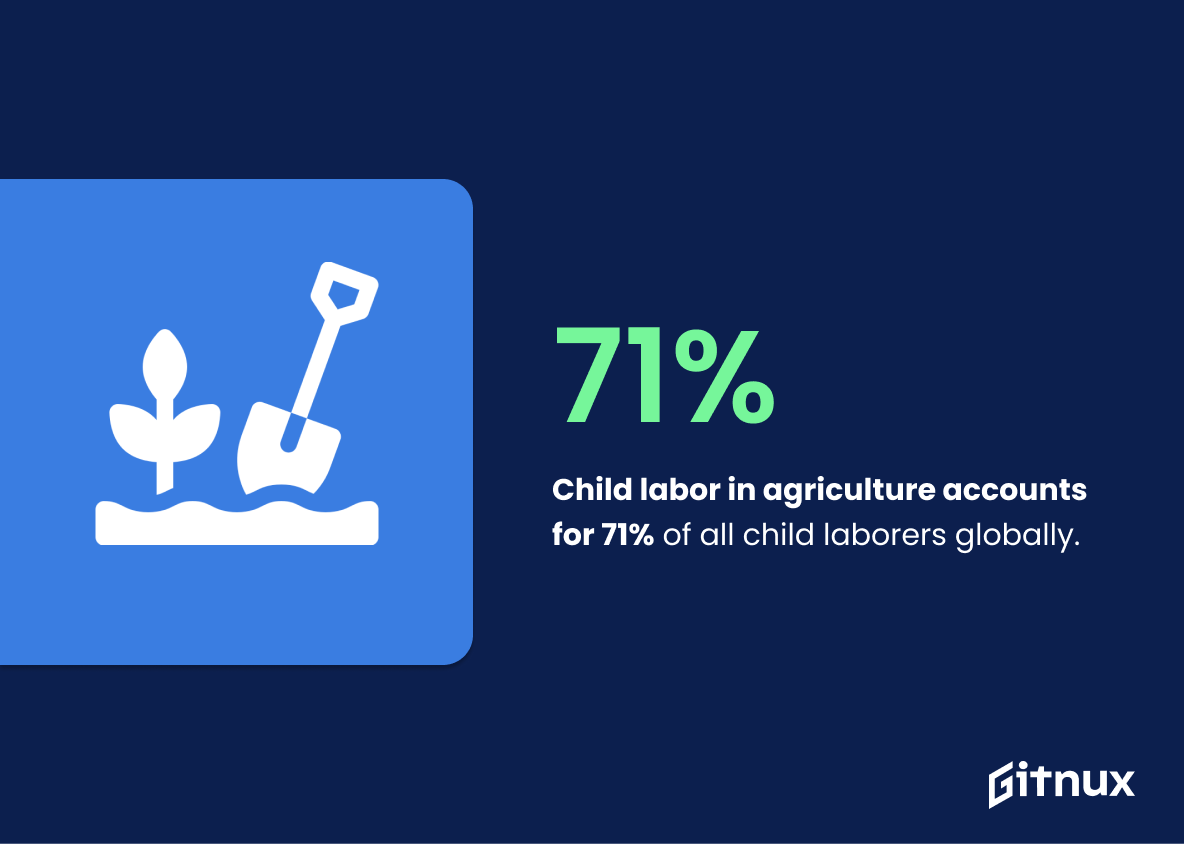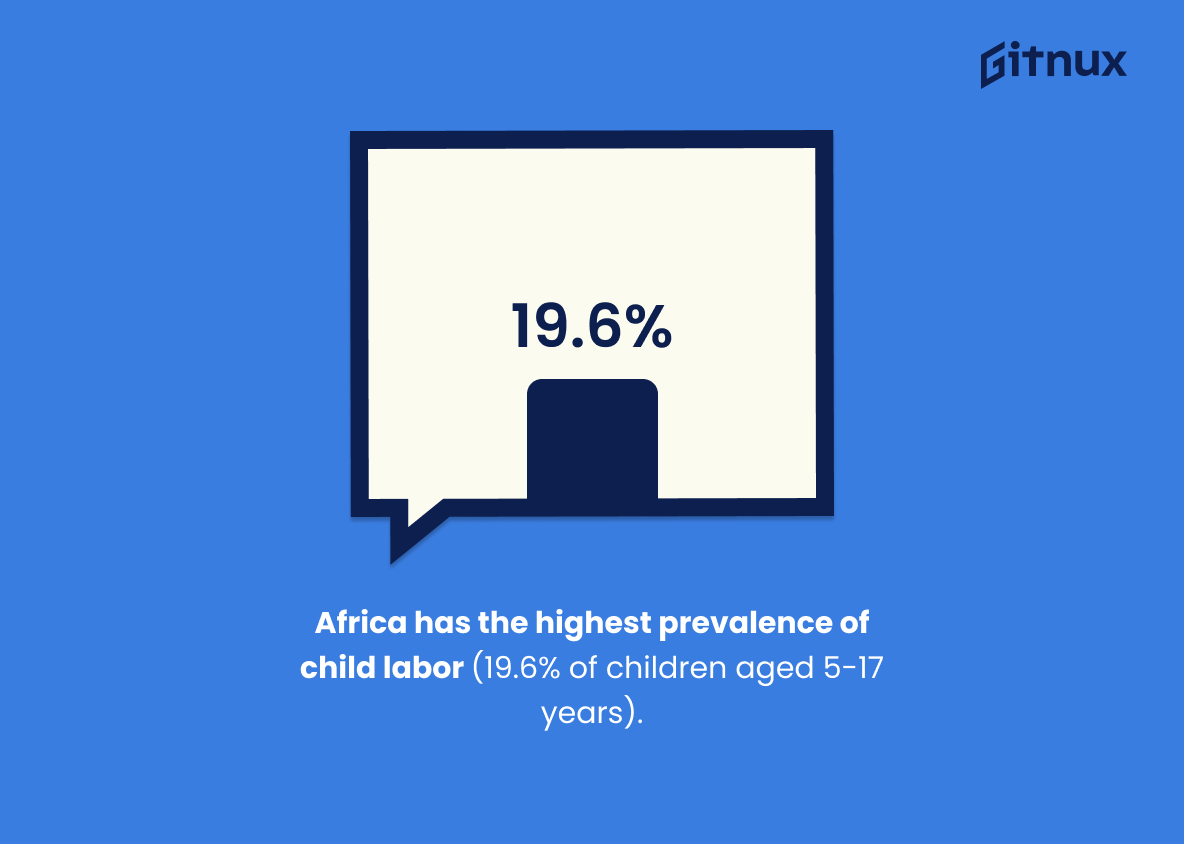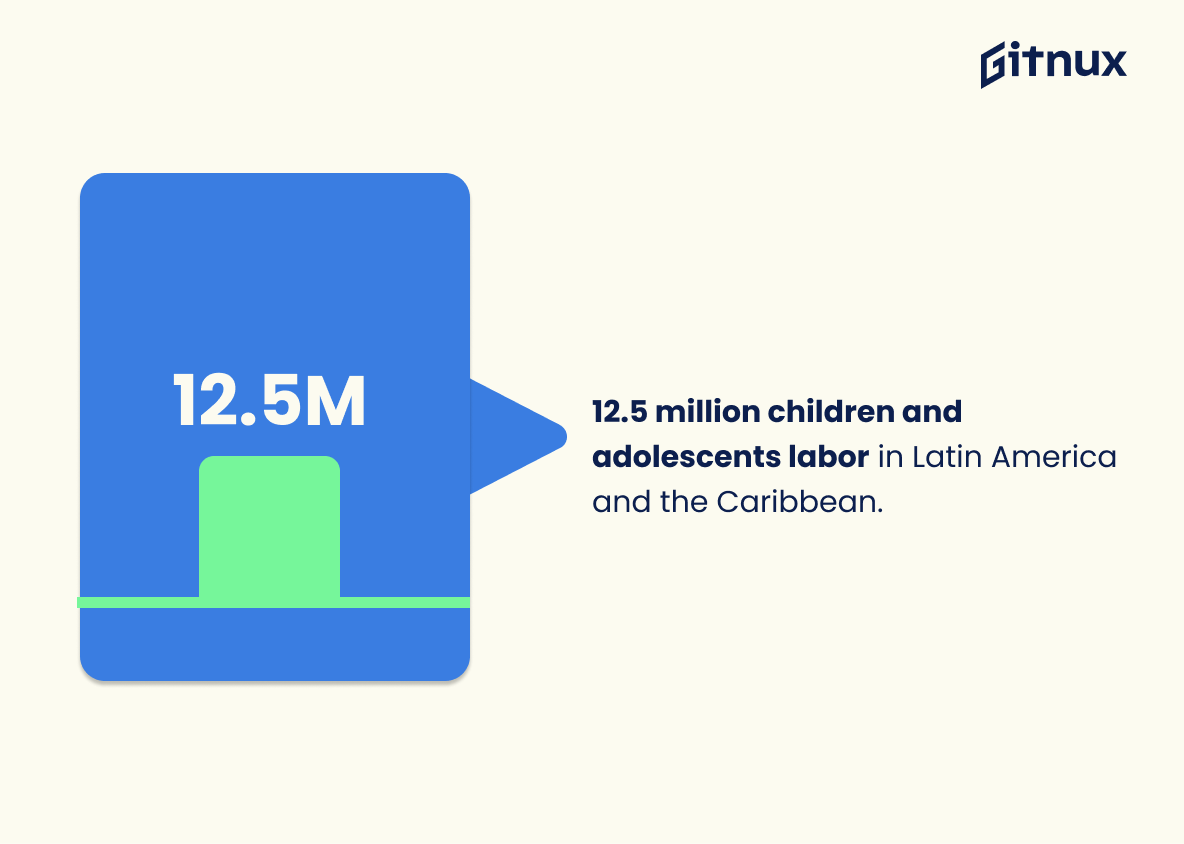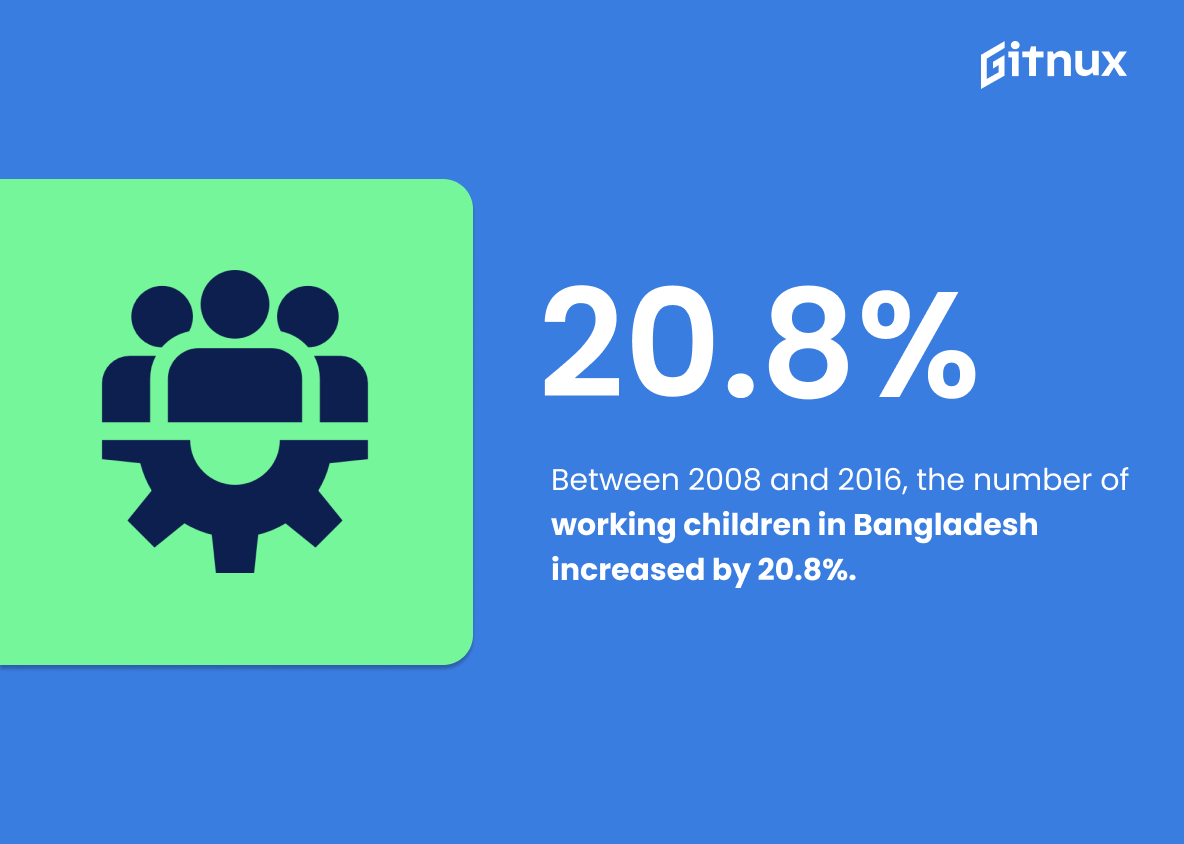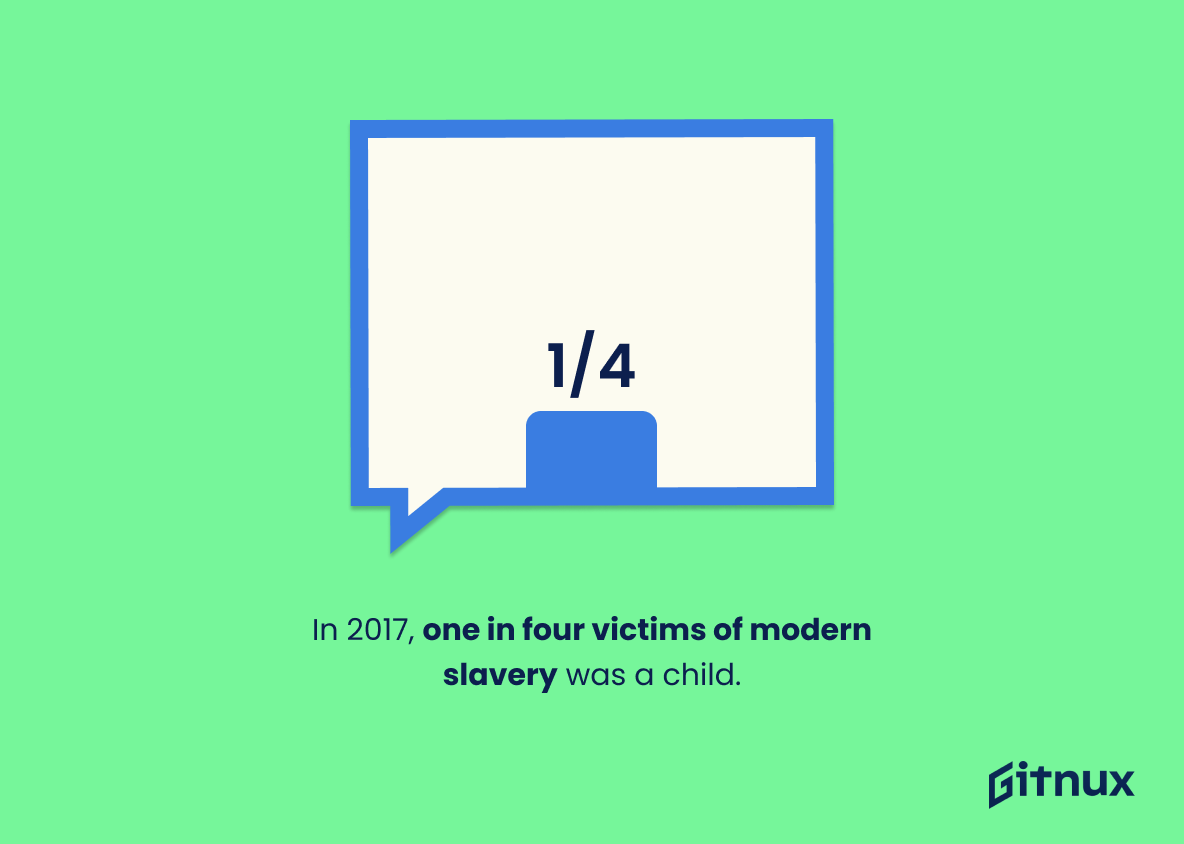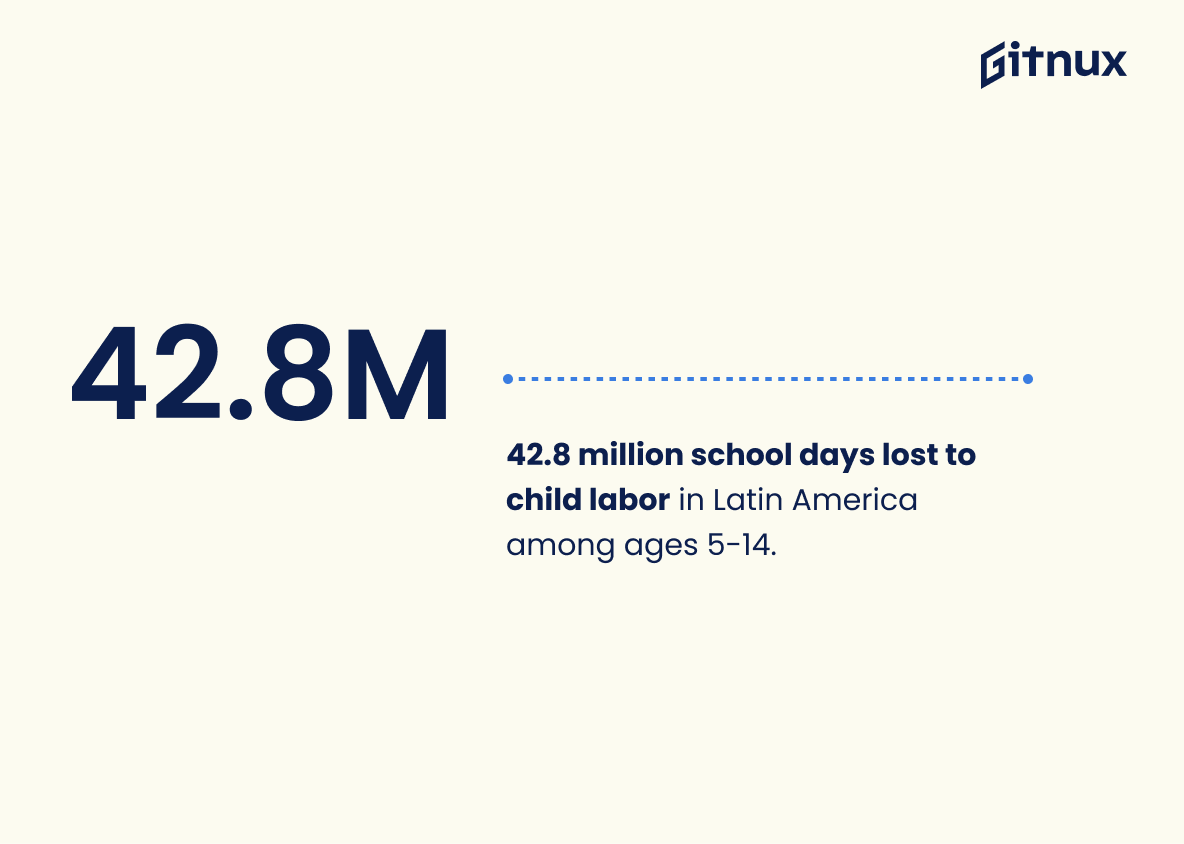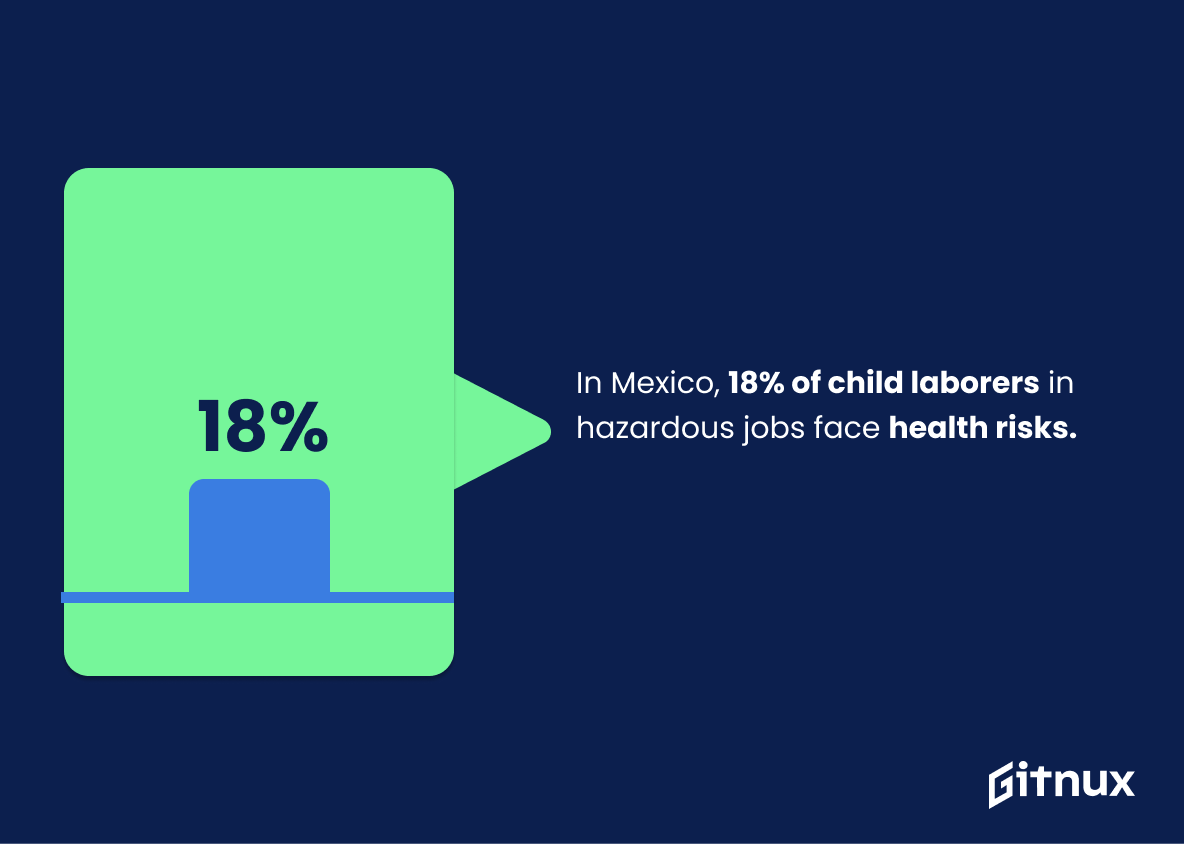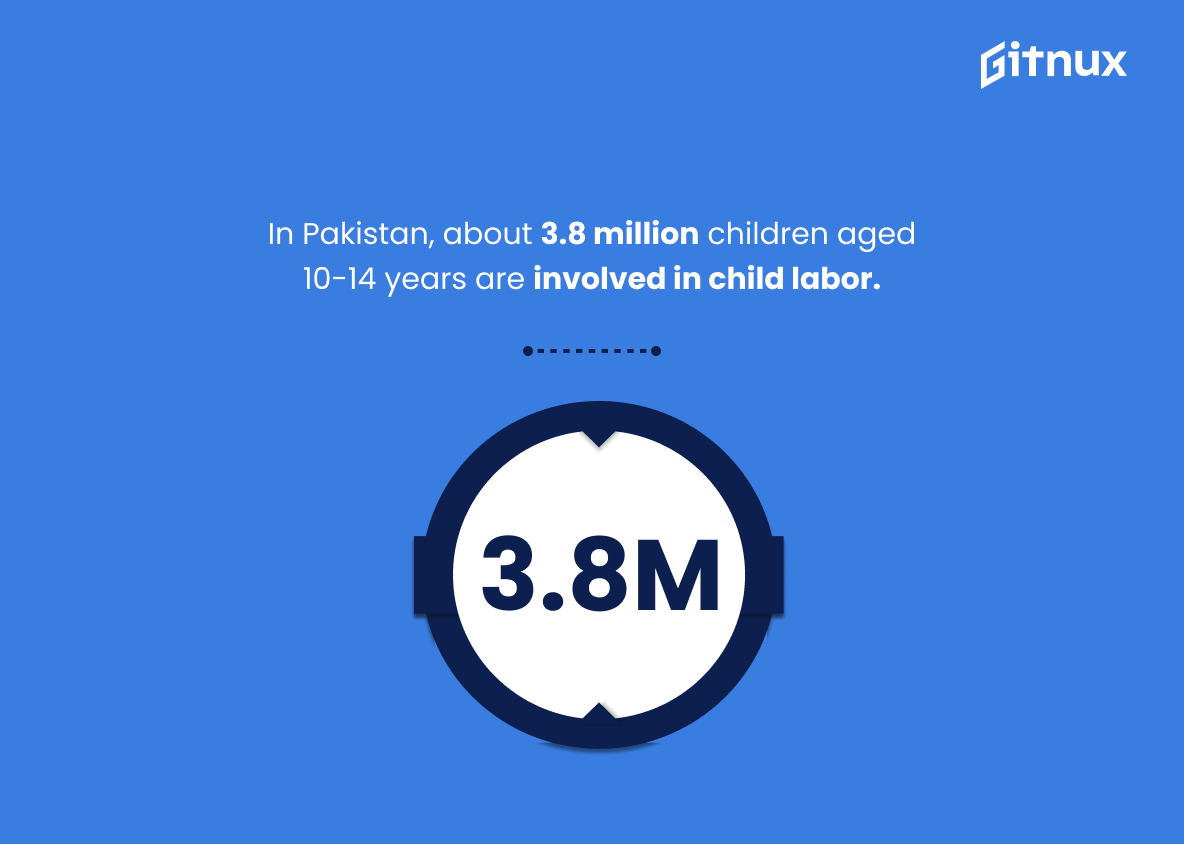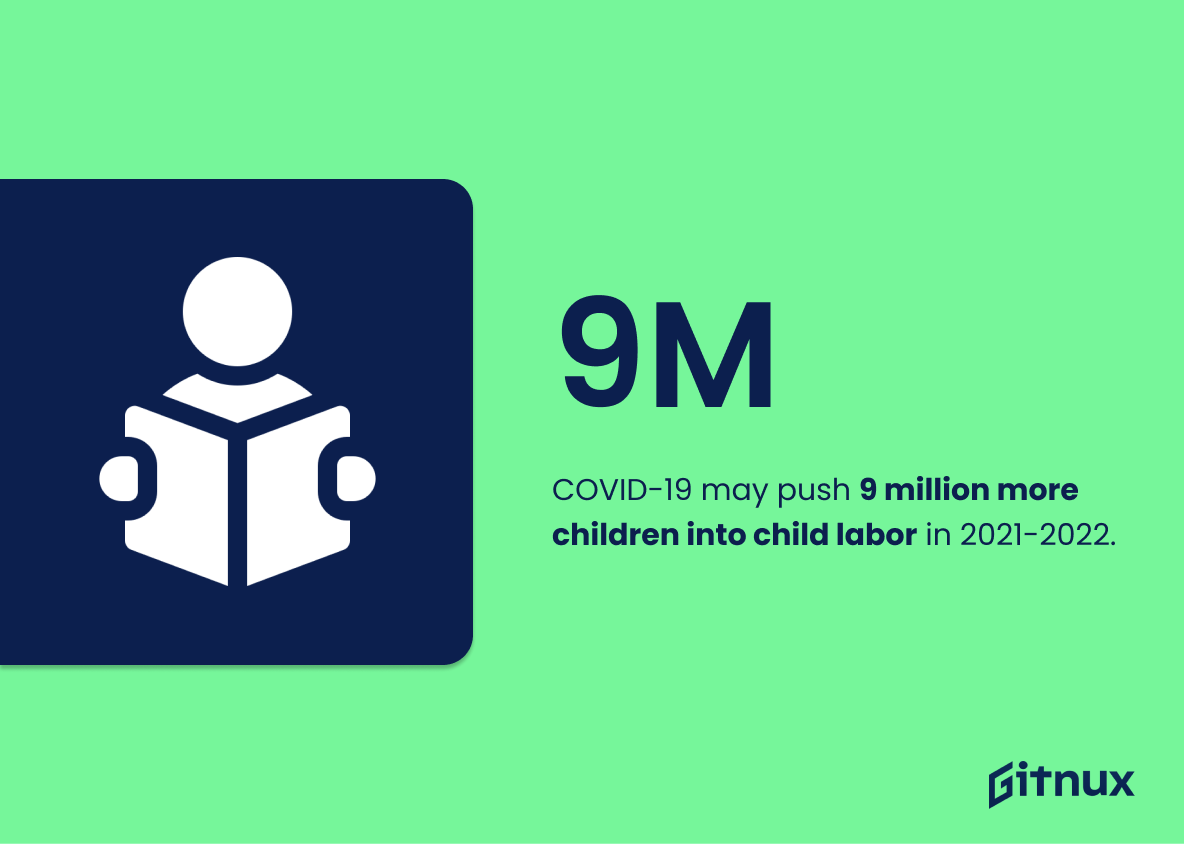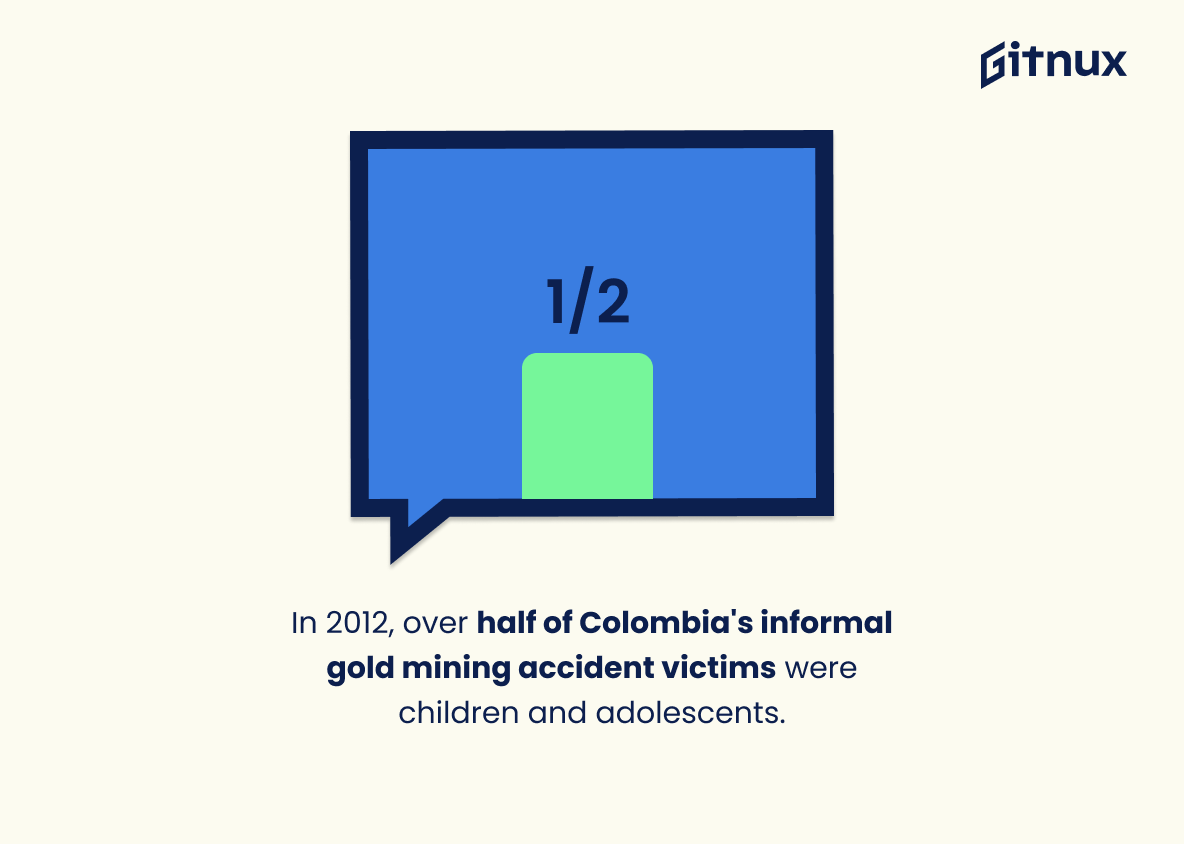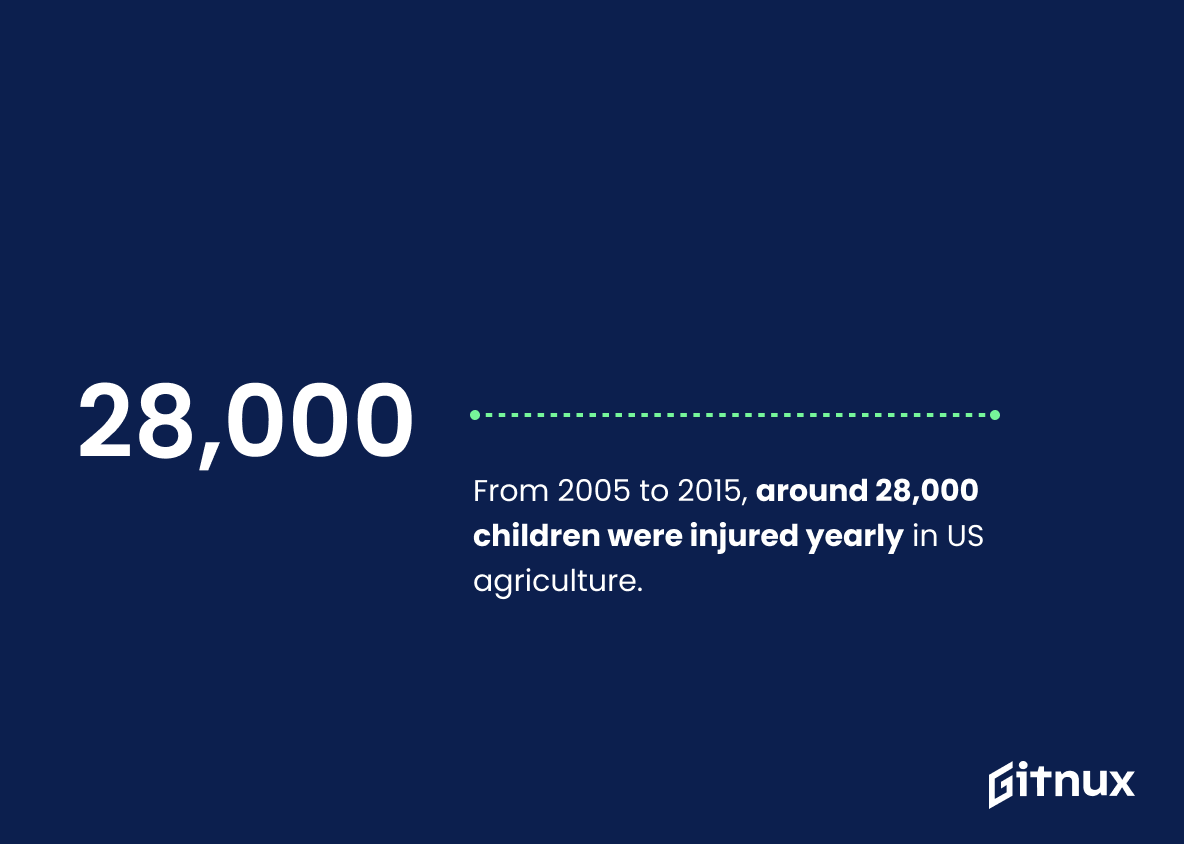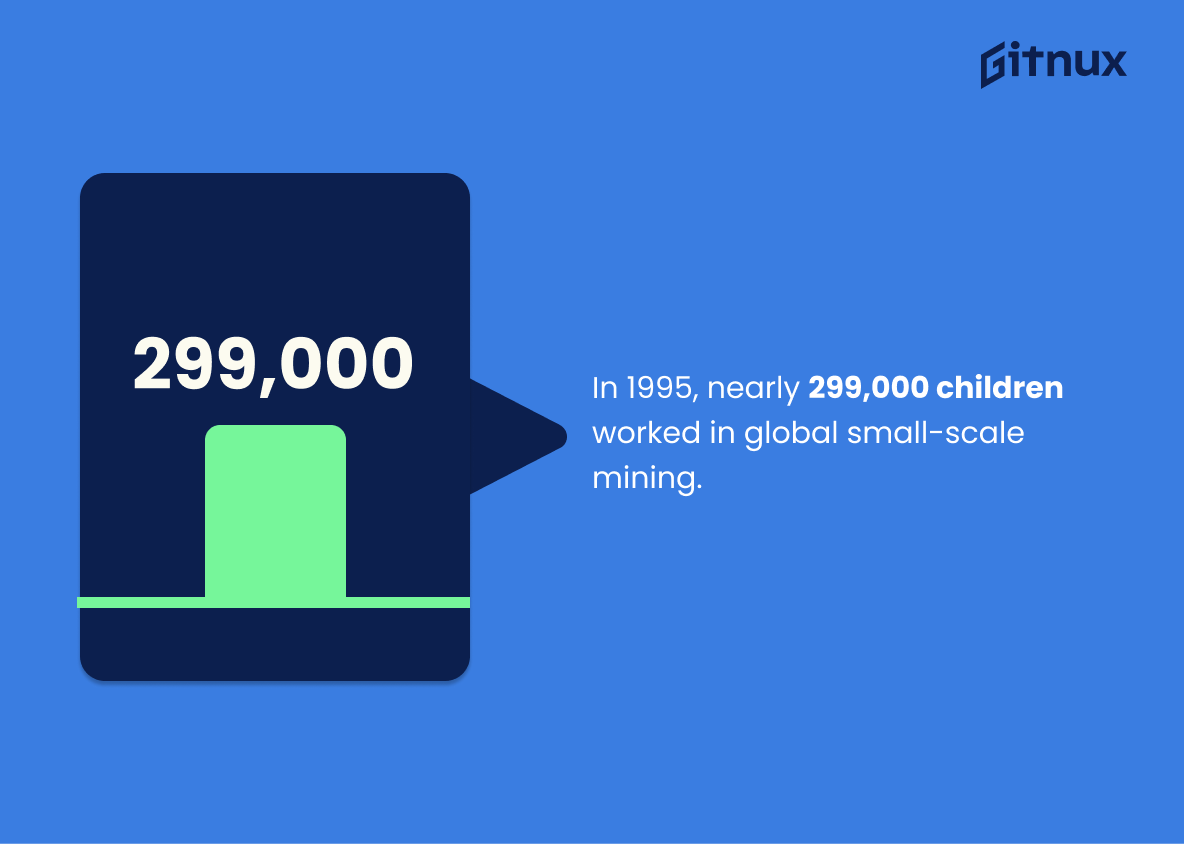Child labor is a global issue that affects millions of children around the world. According to statistics from the International Labour Organization (ILO), 152 million children worldwide are victims of child labor, with 73 million working in hazardous conditions. Almost half of all child laborers (48%) are aged 5-11 years old and 71% work in agriculture globally. Africa has the highest prevalence rate at 19.6%, while 10% of all children in Asia and Pacific regions are engaged in some form of child labor, as well as 12.5 million children and adolescents across Latin America and Caribbean countries combined.
In addition, 98 million out of these 152 million total child laborers work within agricultural sectors such as farming, fishing, aquaculture forestry or livestock production; 58.6% face hazardous conditions specifically within Sub-Saharan African countries alone; 2.1million estimated cases exist within India; Bangladesh saw an increase by 20%; 1/4th victims involved modern slavery were found to be minors between 2008 – 2016 period; 42 8m school days lost due to accidents & illnesses involving kids aged 5 – 14 yrs.; 18 % Mexican kids suffer from health problems related to their job ; 3 .8 m Pakistani kids aged 10 – 14 yr., 9 m more risk being pushed into labour due COVID19 pandemic , 28000 US kid injured annually 2005 – 2015 & 299 000 small scale mining operations affected worldwide 1995 have been reported respectively . Moreover , Child Labor In Tobacco Production Has Been Linked To Serious Health Risks Such As Green Tobacco Sickness And Acute Nicotine Poisoning Too .
It’s clear that this problem needs urgent attention if we want our future generations grow up safe without having any kind exploitation on them whatsoever.
Child Labour Casualties Statistics Overview
Child labor in agriculture accounts for 71% of all child laborers globally.
This statistic is a stark reminder of the prevalence of child labor in the agricultural sector. It highlights the fact that the majority of child laborers are employed in this sector, and that the issue of child labor is far from being resolved. This statistic is a call to action, urging us to take steps to protect children from exploitation and ensure that they are able to enjoy their childhoods.
Africa has the highest prevalence of child labor (19.6% of children aged 5-17 years).
This statistic is a stark reminder of the devastating effects of child labor in Africa. It highlights the urgent need for action to be taken to protect the rights of children and to ensure that they are not exploited for labor. It is a call to action to governments, organizations, and individuals to take a stand against child labor and to work towards creating a better future for the children of Africa.
10% of all children in Asia and the Pacific are engaged in child labor.
This statistic is a stark reminder of the prevalence of child labor in Asia and the Pacific, and serves as a call to action for those who are in a position to help. It highlights the urgent need to address the issue of child labor in the region, and to ensure that all children are able to enjoy their right to a safe and secure childhood.
12.5 million children and adolescents are engaged in child labor in Latin America and the Caribbean.
This statistic is a stark reminder of the devastating effects of child labour in Latin America and the Caribbean. It highlights the sheer number of children and adolescents who are being deprived of their right to a safe and secure childhood, and instead are being forced to work in hazardous and exploitative conditions. This statistic serves as a call to action, to ensure that these children are protected and given the opportunity to reach their full potential.
Hazardous child labor affects 58.6% of child laborers in Sub-Saharan Africa.
This statistic is a stark reminder of the devastating reality of child labor in Sub-Saharan Africa. It paints a vivid picture of the immense suffering endured by the majority of child laborers in the region, and serves as a call to action to address this pressing issue.
Between 2008 and 2016, the number of working children in Bangladesh increased by 20.8%.
This statistic is a stark reminder of the growing prevalence of child labour in Bangladesh. It highlights the fact that, despite efforts to reduce the number of working children, the situation has only worsened over the past eight years. This is a worrying trend that needs to be addressed urgently in order to protect the rights of children and ensure their safety.
In 2017, one in four victims of modern slavery was a child.
This statistic is a stark reminder of the devastating reality of modern slavery, particularly for children. It highlights the urgent need to address the issue of child labour, which is a major contributor to the prevalence of modern slavery. It is a call to action to ensure that children are protected from exploitation and are given the opportunity to reach their full potential.
42.8 million school days were lost due to work-related accidents and illnesses involving children aged 5-14 in Latin America.
This statistic is a stark reminder of the devastating impact of work-related accidents and illnesses on the lives of children in Latin America. It paints a vivid picture of the sheer number of school days lost due to these preventable tragedies, and serves as a reminder of the urgent need to address the issue of child labour in the region.
In Mexico, 18% of children in hazardous work suffer from work-related accidents or health problems.
This statistic is a stark reminder of the dangers that children in hazardous work in Mexico face. It highlights the fact that not only are these children being put in dangerous situations, but they are also suffering from the consequences of their work. This statistic serves as a call to action to ensure that these children are protected and that their rights are respected.
In Pakistan, about 3.8 million children aged 10-14 years are involved in child labor.
This statistic is a stark reminder of the devastating effects of child labor in Pakistan. It paints a vivid picture of the millions of children who are being deprived of their right to a childhood and a proper education, and instead are being forced to work in hazardous conditions. It serves as a call to action to those in positions of power to take steps to end this injustice and ensure that all children in Pakistan are able to enjoy their right to a safe and secure childhood.
Over 2021-2022, an additional 9 million children are at risk of being pushed into child labor due to the COVID-19 pandemic.
This statistic is a stark reminder of the devastating impact the COVID-19 pandemic has had on children around the world. It highlights the urgent need to address the issue of child labor, which has been exacerbated by the pandemic. This statistic serves as a call to action to ensure that the rights of children are protected and that they are not forced into labor due to economic hardship. It is a reminder that the fight against child labor is far from over and that more needs to be done to protect the most vulnerable in society.
In 2012, more than half of the informal gold mining accident victims in Colombia were children and adolescents.
This statistic is a stark reminder of the devastating consequences of child labour in Colombia. It paints a vivid picture of the tragic reality that many children and adolescents are facing in the informal gold mining industry, and highlights the urgent need for action to protect these vulnerable individuals.
Between 2005 and 2015, an estimated 28,000 children were injured each year working in agriculture in the United States.
This statistic is a stark reminder of the devastating consequences of child labour in the agricultural sector in the United States. It highlights the urgent need for greater protection of children from exploitation and abuse in this industry. It also serves as a call to action for governments, employers, and other stakeholders to take meaningful steps to ensure that children are not exposed to hazardous working conditions.
In 1995, up to 299,000 children were estimated to be working in small-scale mining operations worldwide.
This statistic is a stark reminder of the devastating impact of child labour on the lives of millions of children worldwide. It paints a vivid picture of the sheer number of children who are being forced to work in hazardous and exploitative conditions, with no access to education or other basic rights. It serves as a powerful reminder of the urgent need to address the issue of child labour and to ensure that all children are able to enjoy their right to a safe and secure childhood.
Child labor in tobacco production has been linked to serious health risks such as Green Tobacco Sickness and acute nicotine poisoning.
This statistic is a stark reminder of the devastating consequences of child labor in tobacco production. It highlights the fact that children are being exposed to serious health risks such as Green Tobacco Sickness and acute nicotine poisoning, which can have long-term implications for their health and wellbeing. This statistic is a powerful reminder of the need to take action to protect children from exploitation and ensure that their rights are respected.
Conclusion
The statistics presented in this blog post demonstrate the devastating effects of child labor on a global scale. 152 million children worldwide are victims of child labor, with 73 million working in hazardous conditions and 48% aged 5-11 years old. Child labor is particularly prevalent in Africa (19.6%), Asia and the Pacific (10%) and Latin America and the Caribbean (12.5%). The agricultural sector accounts for 71% of all child laborers globally, while 98 million work specifically within farming, fishing, aquaculture, forestry or livestock activities – 58.6% being exposed to hazardous conditions in Sub-Saharan Africa alone. 2.1 million children are estimated to be involved in hazardous work India; 10%, 20%.8%, respectively between 2008-2016 Bangladesh; 1/4th modern slavery victims were children 2017 & 42 .8million school days lost due to accidents involving kids aged 5-14 Latin America 18 % Mexico suffer from health problems 3 . 8 Million Pakistan at risk 2021–2022 9Million pushed into labour due COVID 19 2012 more than half gold mining accident Colombia 28000 injured annually US 1995 299000 small scale mining operations linked serious health risks Green Tobacco Sickness acute nicotine poisoning Brazil tobacco workers face grave danger
It is clear that urgent action must be taken by governments around the world if we want to end this crisis once and for all – no matter where it occurs or what form it takes: whether through forced labour trafficking or dangerous working environments such as mines or farms – every effort should be made towards protecting our most vulnerable citizens from exploitation so they can have a chance at living their best lives free from harm’s way
References
0. – https://www.documents1.worldbank.org
1. – https://www.hrw.org
2. – https://www.eclt.org
3. – https://www.aei.org
4. – https://www.swissinfo.ch
5. – https://www.ilo.org
6. – https://www.ourworldindata.org
7. – https://www.iisd.org
8. – https://www.thedailystar.net
